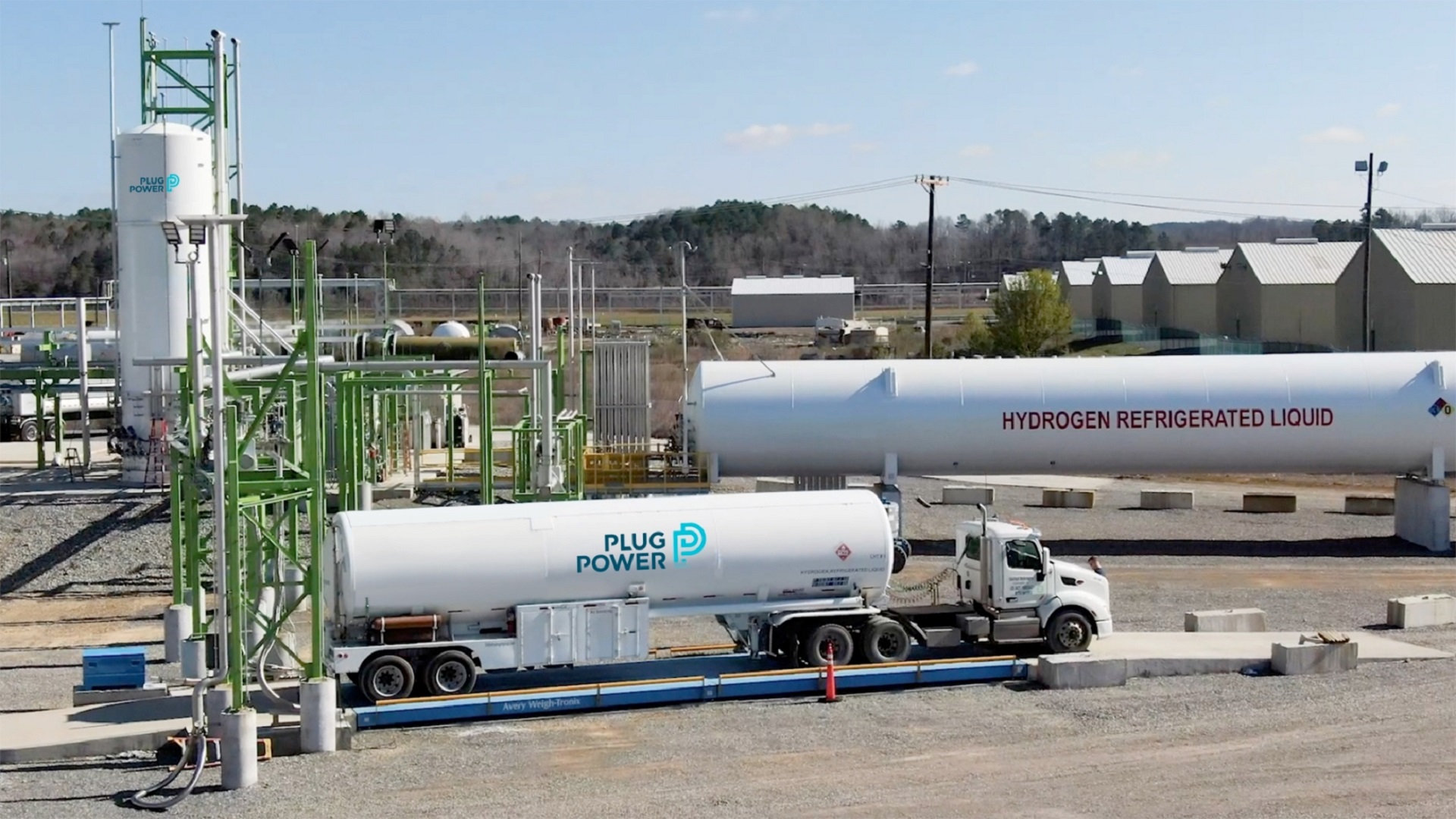
A Plug Power green hydrogen plant.
Courtesy Plug Power


A Plug Power green hydrogen plant.
Courtesy Plug Power

Courtesy Plug Power
A Plug Power green hydrogen plant.
A clean fuel company plans to build Pennsylvania’s first green hydrogen plant in southern Lancaster County.
Fuel cell company Plug Power says the facility will be located along the Susquehanna River.
Green hydrogen is seen as a possible solution for industries with hard-to-cut emissions, like shipping and aviation. It’s made by splitting water molecules using renewable electricity, so it doesn’t give off any carbon emissions. Scientists say emissions must be cut dramatically to avoid the worst effects of climate change.
Plug Power is partnering with Holtwood Dam operator Brookfield Renewable Partners. The new plant will use power from the hydroelectric facility and water from the Susquehanna River to produce 15 metric tons of liquid hydrogen per day, which the company says is enough to power 1,500 heavy duty trucks.
The plant is expected to be online by the end of 2022 and create 25 permanent jobs.
CEO Andy Marsh said he hopes to create a national green hydrogen network with a capacity of 500 metric tons of hydrogen per day by 2025. The company owns a Tennessee plant that produces more than 6 metric tons of hydrogen per day and recently announced plans for a new 45 metric ton per day plant in New York.
He said the Lancaster County plant will be well-placed.
“It just makes sense because there’s access, due to their hydro plant, to green electricity and we’re able to make green hydrogen and we have many customers which are within 250 miles of that site that will be able to use our hydrogen for a variety of applications,” Marsh said.
Marsh said his biggest customers are Amazon and Walmart, who use the Plug Power’s fuel cells to run forklifts. Both companies have set emissions reduction goals for 2040 and Marsh said fuel cell vehicles will be necessary to meet those targets.
The new plant could help set up Pennsylvania as a hydrogen leader, said Bruce Logan, a professor of environmental engineering and director of the Hydrogen Energy Center at Penn State.
“We are going to need a diverse range of fuels and I think we are well positioned for green hydrogen but also blue hydrogen,” Logan said.
Blue hydrogen is made using natural gas and carbon capture so the by-product greenhouse gas does not reach the atmosphere.
Most hydrogen now is made with fossil fuels and is used as fertilizer and in refineries. Logan said about 2 percent of global carbon dioxide emissions come from making hydrogen.
Green hydrogen can be around four times more expensive to make than fossil fuel-generated hydrogen. However the price of renewables has been going down, which could help make it more competitive.
The Natural Resources Defense Council said cheap renewable power and global hydrogen commitments made in the past year could put green hydrogen on a path to price parity by 2030. It’s encouraging targeted policies and certification programs to make sure the green version is made and used.
In a blog post, policy analyst Rachel Fakhry said, “As interest in new hydrogen applications grows, [these policies] should be a priority for industry, advocates, and state legislators to ensure that we’re not just shifting emissions from one point to another.”
In his infrastructure and jobs plan announced Wednesday, president Joe Biden proposed $15 billion in demonstration projects for climate research and development priorities, including hydrogen. The proposal calls for decarbonized hydrogen projects in distressed communities that can show how to support heavy industry with cleaner fuel.
StateImpact Pennsylvania is a collaboration among WITF, WHYY, and the Allegheny Front. Reporters Reid Frazier, Rachel McDevitt and Susan Phillips cover the commonwealth’s energy economy. Read their reports on this site, and hear them on public radio stations across Pennsylvania.
(listed by story count)
StateImpact Pennsylvania is a collaboration among WITF, WHYY, and the Allegheny Front. Reporters Reid Frazier, Rachel McDevitt and Susan Phillips cover the commonwealth’s energy economy. Read their reports on this site, and hear them on public radio stations across Pennsylvania.
Climate Solutions, a collaboration of news organizations, educational institutions and a theater company, uses engagement, education and storytelling to help central Pennsylvanians toward climate change literacy, resilience and adaptation. Our work will amplify how people are finding solutions to the challenges presented by a warming world.